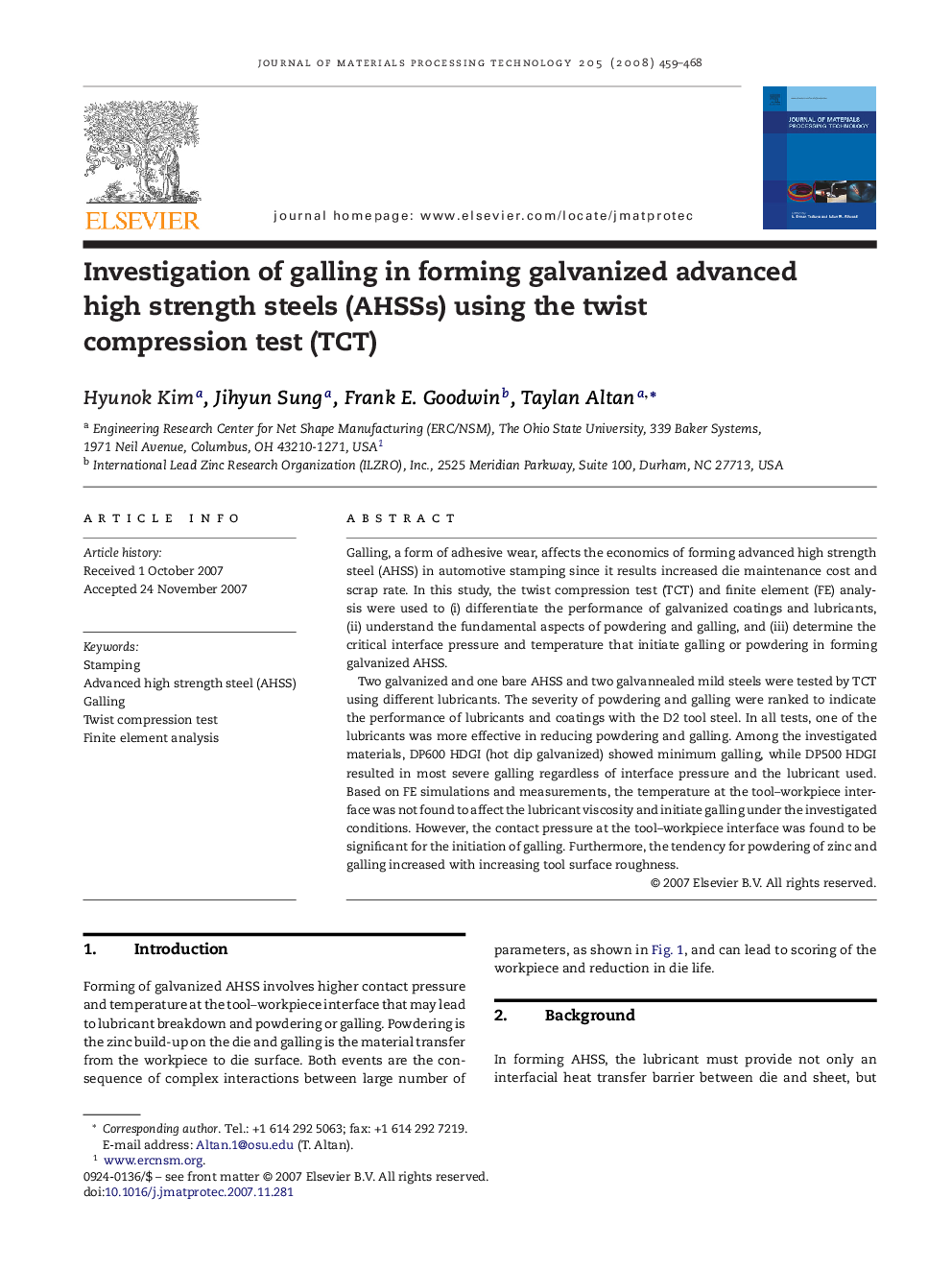| Article ID | Journal | Published Year | Pages | File Type |
|---|---|---|---|---|
| 795289 | Journal of Materials Processing Technology | 2008 | 10 Pages |
Galling, a form of adhesive wear, affects the economics of forming advanced high strength steel (AHSS) in automotive stamping since it results increased die maintenance cost and scrap rate. In this study, the twist compression test (TCT) and finite element (FE) analysis were used to (i) differentiate the performance of galvanized coatings and lubricants, (ii) understand the fundamental aspects of powdering and galling, and (iii) determine the critical interface pressure and temperature that initiate galling or powdering in forming galvanized AHSS.Two galvanized and one bare AHSS and two galvannealed mild steels were tested by TCT using different lubricants. The severity of powdering and galling were ranked to indicate the performance of lubricants and coatings with the D2 tool steel. In all tests, one of the lubricants was more effective in reducing powdering and galling. Among the investigated materials, DP600 HDGI (hot dip galvanized) showed minimum galling, while DP500 HDGI resulted in most severe galling regardless of interface pressure and the lubricant used. Based on FE simulations and measurements, the temperature at the tool–workpiece interface was not found to affect the lubricant viscosity and initiate galling under the investigated conditions. However, the contact pressure at the tool–workpiece interface was found to be significant for the initiation of galling. Furthermore, the tendency for powdering of zinc and galling increased with increasing tool surface roughness.
